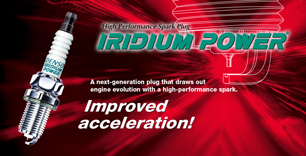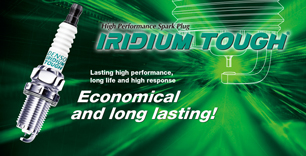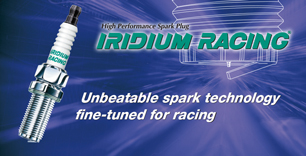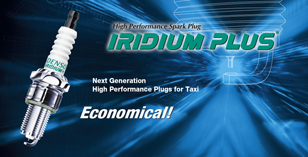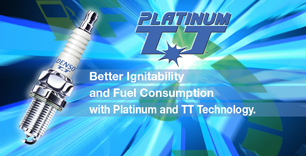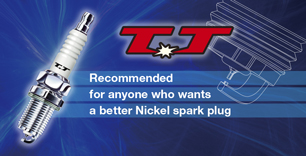Service Life
Lifespan of normal spark plugs
Electrode wear
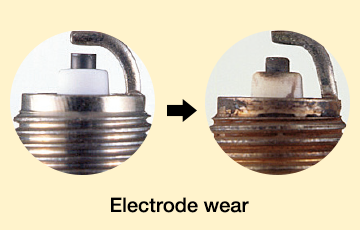
The electrode wears from the locations that discharge easily with spark discharge.
In particular, since the center electrode reaches high temperatures, it oxidizes and wears.
The amount of electrode wear varies with the electrode material melting point, strength, hardness, etc. In order to reduce the amount of this wear, nickel alloys, platinum, iridium, and other such materials are used for the electrodes and service lives are also extended with fine electrodes.
Also, the wear varies with the engine type and usage conditions, but for normal plugs, it is approximately in the range of 0.10-0.15mm for each 10,000km driven.
Things to be aware of
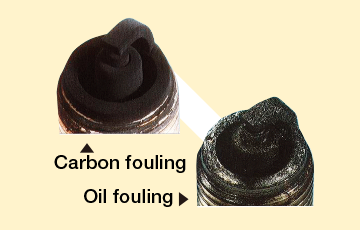
Continuing to use a spark plug with worn electrodes puts stress on the ignition coil and can shorten its life.
Please replace spark plugs sooner rather than later.
Beware of only using your vehicle for short trips or slow driving!
This can lead to carbon fouling or oil fouling.
Rise in required voltage
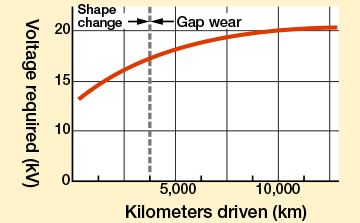
The required voltage (the voltage required to discharge across the gap) rises in proportion to the distance driven.
This rise in the required voltage is large until the sharp section at the end of the center electrode is worn round to some degree (about 4,000km). After that, the main factor is the enlargement of the gap due to electrode wear and the rise in the required voltage is smaller.
Misfiring and its cause
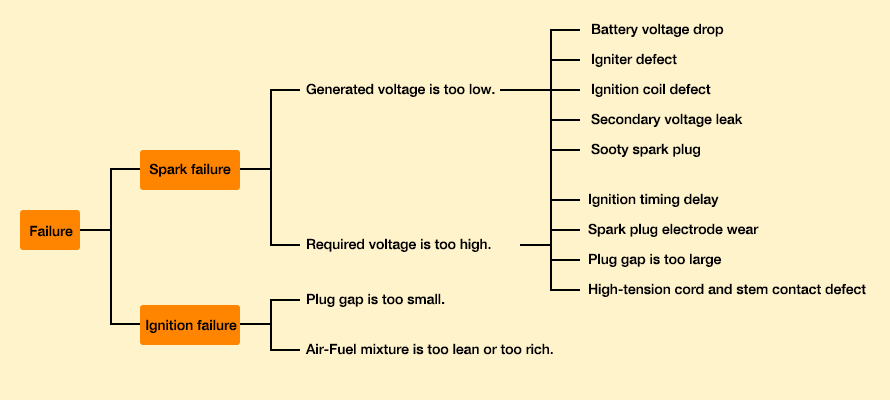
| Failure | Air-Fuel mixture does not burn. Failure due to sparks not discharging between the electrodes of the spark plug. |
|---|---|
| Spark failure | This occurs when the voltage generated by the ignition coil is lower than the voltage required by the spark plug. |
| Ignition failure | Sparks discharge between the electrodes of the spark plug but the air-fuel mixture does not ignite and burn. |
Economic service life
Regarding the spark plug replacement timing
The electrode progressively wears, causing the spark gap to increase, along with the increasing number of spark discharges. When the gap exceeds a certain limit, the sparking performance deteriorates, which may prevent stable ignition of the gas mixture. When this happens, the horsepower of the engine falls, the fuel economy deteriorates and also the quality of the exhaust gas is adversely affected, so it is necssary to replace the plugs.
For details, refer to the information in “Regarding the spark plug replacement timing”.
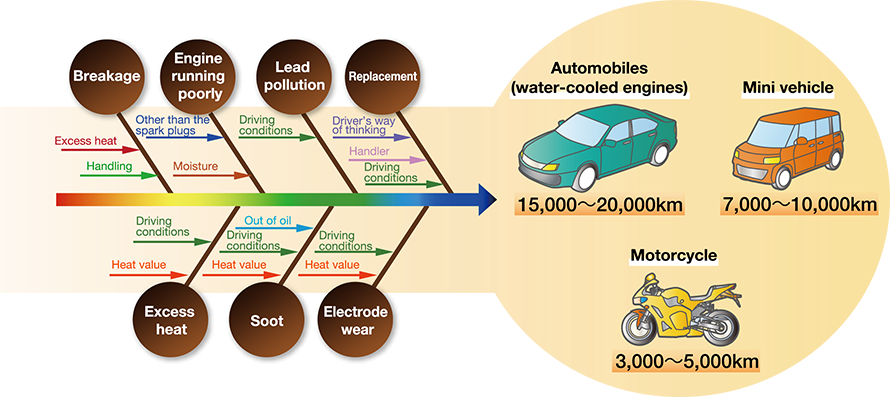
The physical service life for a spark plug can be thought of as the number of kilometers driven until the spark plug begins to misfire. Misfiring causes not only wastage of fuel, but also irregular engine vibration and output drop. In particular, for vehicles with emissions controls, misfiring can damage the catalytic converter, so using a spark plug all the way to the end of its physical service life is inexpedient economically.
Therefore, as the economical replacement interval, replacement after the number of kilometers in the figure above is recommended. (However, 100,000km for platinum spark plugs.)
Lifespan of iridium spark plugs
Not all iridium spark plugs are the long-life type, there are also some that have the same lifespan as a normal spark plug: 20,000 km (light automobiles: 10,000 km, motorcycles: 5,000 km).
20,000 km type [normal lifespan type]
| Models beginning with “I” |
|---|
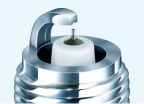
[Examples] |
100,000 km type [long lifespan type]
| Models beginning with “S”, “Z”, “F”, “D”, and “V” |
|---|

[Examples] |

